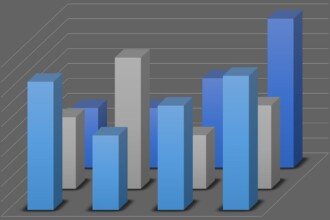Let’s take a look at the most profitable banking institutions of 2020 ranked by the net income/net profit

Most profitable banks of 2020. Source: unsplash.com
COVID-19 has deeply affected the global banking sector by generating significant instability and high volatility in global capital markets. The pandemic continues to reduce core banking profitability in mature markets, as well as increase the credit risks of banks’ corporate and retail clients. However, major banking institutions are managing to strive somehow in these harsh times.
Industrial and Commercial Bank Of China
Operating income: 197,9B RMB ($30,29B) for the quarter ending September 30, 2020
Total assets: 33,4T RMB ($5,12T) as of September 30, 2020
Net profit: 230,1B RMB ($35,23B) for the Q1-Q3 2020
Market Cap: 2.005T HKD ($258B) (Bloomberg)
The Industrial and Commercial Bank of China has remained in the top spot of the Forbes Global 2000 list of the world’s largest public companies for eight years straight. ICBC is China’s largest bank by the number of total assets. This state-owned bank has several international subsidiaries including those in Canada, the USA, Argentina, and Pakistan. This institution provides credit cards and loans, financing for businesses, and money management services for companies and high net-worth individuals.
ICBC has managed to maintain resilient development throughout 2020. In the first half of the year, its operating income and a pre-provision profit both increased by 2.1% compared with the same period of last year. Despite the ongoing China-US tension, the bank plays a significant role in the international banking stage. It has launched a few initiatives aimed at facilitating cross-border payments this year.
Namely, in August, ICBC unveiled the “Global Business Matchmaking” platform enabling enterprises at home and abroad to have access to the global industrial chain online 24/7. The platform aims to establish the “dual circulation” development pattern which takes the domestic market as the mainstay and allows domestic and foreign markets to boost each other. In addition, ICBC Singapore RMB Clearing Bank and ICBC (Asia) have successfully launched the direct participation function of the Cross-border Interbank Payment System (CIPS). This step shall promote the bidirectional opening-up of financial markets, and facilitate the internationalization of RMB. Thus, ICBC helps to connect the Chinese market to the rest of the world and provides comprehensive supporting financial services to help global customers invest in Chinese capital markets through multiple channels like QFII/RQFII, direct investment, and Bond Connect.
China Construction Bank
Operating income: 186.4B RMB ($28.4B) as of Q1 2020
Total assets: 28.29T RMB ($4.32T) as of Q3 2020
Net profit: 207.6 billion RMB ($31.7B) for the period of Q1-Q3 2020
Market Cap: 1.453T HKD ($187B) (Bloomberg)
One of the “big four” Chinese banks provides customers with comprehensive financial services, including personal banking, corporate banking, investment, and wealth management. CCB has more than 200 branches abroad in about 30 countries and regions. Along with other Chinese banking giants, CCB witnessed record-low valuations in summer when investors were discouraged by the trade wars and popular assumptions that Beijing will encourage the biggest state-owned lenders to bail out smaller peers.
The bank is currently cooperating with digital securities exchange Fusang to raise up to $3 billion through a publicly listed debt security on a blockchain. Retail investors will be able to buy digital tokens on the Fusang exchange using dollars or bitcoin, with investments of as little as $100. The tokens will be backed by deposits at CCB’s branch on the Malaysian island of Labuan.
Agricultural Bank of China
Operating income: 159.44B RMB ($24.4B) as of Q3 2020
Total assets: $3.999T as of Q3 2020
Net profit: 165.69B RMB for the H1 2020 + Q3 2020 ($25.36B)
Market Cap: 1.291T HKD ($166.52B) (Bloomberg)
Agricultural Bank of China provides banking services such as deposits, loans, domestic settlement, bill discounting, currency trading, bank guarantee, and other services to individuals, enterprises, and other clients. Also known as ABC, the bank has around 24,000 branches worldwide, with more than 320 million retail customers and nearly 3 million corporate clients.
The name “agricultural” hasn’t come out of thin air. The banking services here are largely focused on the needs of clients ranging from individual farmers to the country’s largest food and agricultural wholesalers. Since the late 1970s, the Bank has evolved from a state-owned specialized bank to a wholly state-owned commercial bank and subsequently a state-controlled commercial bank.
As for the impact of coronavirus on the bank’s operations, Agricultural Bank of China President Zhang Qingsong said bad loan pressure was rising, as short-term policies aimed at keeping firms afloat expired, adding its profit growth faces pressure from a “declining loan prime rate, fee cuts and an increase in loan loss provisions”. Like the other Chinese banking giants, ABC has seen the biggest profit declines in at least a decade.
Since the government suggests lowering lending rates and deferring repayments on loans this year, the biggest Chinese lenders set aside more funds for potential loan losses in the coming months. ABC also issued tailored policies to support poor counties, launched special programs to boost the consumption of products from poor areas, and promoted the “Poverty Alleviation Mall” via its mobile platform. In response to the pandemic spread, the bank vigorously developed “contactless” financial services, seeing its online financial transactions reaching RMB145.3 trillion in the first half, an increase of 5.65% year on year.
JPMorgan Chase & Co
Operating income: $11.661B for the quarter ending September 30, 2020
Total assets: $3.246T as of September 30, 2020
Net income: $17.1B for the Q1-Q3 2020
Market Cap: $365.419B (Bloomberg)
American multinational investment bank and financial services holding company JPMorgan Chase & Co is by far the largest US bank. It’s also one of the most valuable banks in the world when it comes to the market cap. The company was formed out of more than 1,200 predecessor institutions that have merged over 200 years of its existence. JPMS, CIA, and JPMorgan Chase Bank, N.A. are affiliated companies under the common control of JPMorgan Chase & Co.
As COVID-19 first hit the US economy with a total lockdown, JPMorgan Chase & Co said first-quarter profit fell by 69% to the lowest in more than six years due to the credit costs surge. The bank reported a provision for credit losses of $8.3 billion, which represents a $6.8 billion increase in dollar terms or a 450% jump in percentage terms year-to-year. Nevertheless, some of the damage was offset by gains in the bank’s trading operation. Thus, JPMorgan generated $7.23 billion from trading stocks and bonds in Q1. Furthermore, in Q3 2020, the bank’s profit surprisingly rose by 4% compared to the same period last year. This number doubled the Q2 result, illustrating a stable financial position of the holding amidst the recession.
However, the bank officials believe such a stunning performance may be attributed to the governmental support of individuals and businesses. Therefore, JPMorgan Chase & Co has prepared a set of policy recommendations for the Biden transition team on another round of pandemic relief payments to lower-income households and extending benefits for the unemployed. Their proposal is supported by anonymized customer data that clearly shows CARES Act money from earlier in the year helped Chase customers avoid falling behind on mortgage payments, and their spending and assets dropped immediately after benefits expired in August.
Bank of America Corp.
Revenue, net of interest expense: $20.3 billion for the Q3 2020
Total assets: $2.738T as of September 30, 2020
Net income: $12.4B for the Q1-Q3 2020
Market Cap: $248.451B (Bloomberg)
The second-largest banking institution in the US, after JPMorgan Chase, primarily deals with commercial banking, wealth management, and investment banking. It serves approximately 66 million consumer and small business clients in the US and approximately 35 other countries.
Compared to its closest rivals, the bank is not coping with the pandemic crisis too well. While a zero-rate policy didn’t hinder JPMorgan Chase and Goldman Sachs to post considerable revenues, the Bank of America performed below the analysts’ expectations, showing a 15.78% decline of net income year-over-year. Although BofA had a weak quarter this fall, there are some positive signs of the bank’s future rebound. To begin with, the famous investment visionary Warren Buffett is still buying the BofA stock, whereas he reduced the exposure to a number of large U.S. banks this year. Besides, the institution’s CEO Brian Moynihan is expressing optimism as he sees consumer spending catch back up with last year’s pace.
Moynihan has been recently named the 2020 Chief Executive of the Year. With his strategy of “responsible growth,” the once-troubled bank achieved record profitability last year ($27.43 billion in 2019 versus a $2.2 billion loss in 2010). Continuing his steady policies, Moynihan believes the worst is already behind. Moreover, BofA is handling this crisis with dignity.
SEE ALSO:









